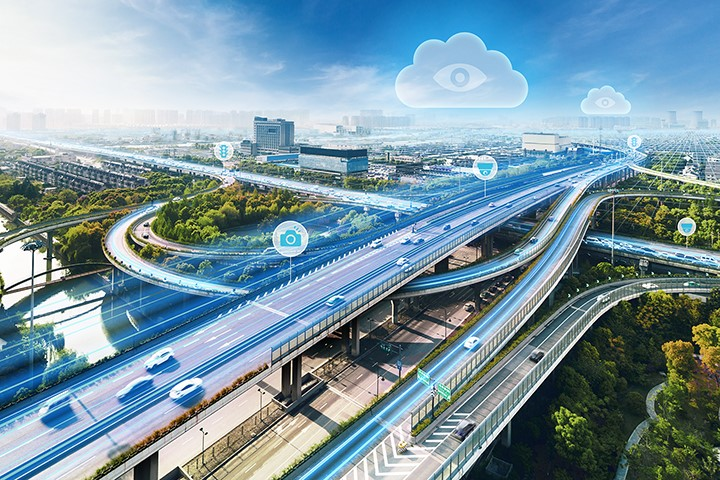Summary
In a progressively urbanized setting, metropolises must devise inventive resolutions to confront an escalating array of issues. Challenges like traffic jams, prolonged journeys, and heightened CO2 emissions—underscored by the lofty traffic rankings published annually—are among the adversities that demand attention. Adopting sustainable traffic management technologies serves as the linchpin in effectively combatting these hurdles. These cutting-edge advancements not only prepare the groundwork for swift urban enlargement but also facilitate the transition to authentic intelligent cities.
For instance, let’s consider the case of Lancaster City in California. They grappled with an obsolete infrastructure that hindered secure and centralized traffic regulation. By instituting resilient infrastructure and centralized network supervision, the city now actively oversees traffic, occurrences, and road users, delivering real-time insights to efficiently manage traffic. This significantly ameliorated response durations for indispensable repairs while curtailing disturbances to the populace. Furthermore, it derogated the reliance on human intervention by a remarkable 67%, thereby alleviating workloads.
Incontestably, adept traffic management necessitates networks that are futureproof, trustworthy, safeguarded, and simplified in administration. Thus, straightforward network management software holds pivotal significance in streamlining network operations, mitigating maintenance requirements, and augmenting safety. Let’s delve into two distinct intelligent transportation system (ITS) applications and discover how straightforward network management aids in surmounting hardships.
Securing Communications for Traffic Signals
A county in the U.S. revamped its existing closed-loop traffic signal control mechanism by centralizing traffic oversight and fortifying the traffic communication system. Nonetheless, the amalgamation process posed two obstacles:
- Intricate Integration: Meshing a closed-loop system with contemporary smart city infrastructure can prove intricate. Complications arising from compatibility, archaic hardware, and software constraints may render it immensely challenging to seamlessly incorporate new technologies and centralized control.
- Ongoing Care and Assistance: The extensive network infrastructure necessitates perpetual maintenance and assistance. Diagnosing and rectifying network apparatus across a broad area can be costly and time-consuming. Efficiently responding to equipment malfunctions or system glitches, especially in remote or hard-to-access sites, poses logistical hurdles that must be tackled.
The crux of their triumph resided in employing futureproof network management software that expedited maintenance processes. Specifically:
- Uncomplicated network management software empowers engineers to promptly identify and rectify network quandaries at traffic locales, augmenting maintenance and traffic efficiency.
- Visual depiction of the comprehensive network topology and condition, encompassing routers, switches, servers, and interconnected devices, empowers administrators to instantaneously visualize the structure and interrelations of the network. This visual insight enhances not only network management but also furnishes various benefits for addressing compatibility grievances and integrating archaic hardware effectively.
Fetching Precise Data for Automated Toll Collection
Following the successful resolution of effective and secure communications for traffic signals, attention pivots towards automated toll collection. We underscore the significance of futureproof networking in precise and efficient toll collection to ensure seamless traffic flow on highways.
Automated toll collection enables motorists to remit dues without halting at manned toll booths, thereby alleviating traffic congestion on highways. For accurate billing of the rightful motorists, automated toll collection systems hinge on precise, real-time data about swiftly moving vehicles. Accurate data collection, in turn, hinges on network infrastructure that furnishes remote management and ample bandwidth.
Centralized management and remote configuration of network devices curtail the necessity for on-site maintenance and diminish operational hazards. Proactive real-time alerts allow operators to promptly pinpoint and rectify network glitches, lowering the likelihood of protracted downtime and ensuring a dependable and secure toll collection system.
High-capacity fiber uplinks expedite the transmission of high-resolution video data back to the primary control center and back high-capacity PoE for fueling outdoor PTZ IP cameras. This mechanism furnishes astoundingly precise visual data on moving vehicles, such as lucid images of their license plates, ensuring meticulous motorist billing.
Owing to these capabilities, the infrastructure can cater to high-speed data transmission and processing. It compiles and analyzes data from multiple toll collection points in real-time, guaranteeing accurate billing and timely data retrieval.
Surmounting OT Network Impediments and Transitioning to a Clever Digital Era
With dependable networks and user-friendly software, localities globally are curtailing maintenance obligations and proactively mitigating risks to elevate safety levels. This stride forward transcends technology alone; it’s about formulating Intelligent Transportation Systems (ITS) that enrich the populace’s existence, foster sustainability, and propel urban efficacy.
Are you primed to inaugurate your smart city voyage? Obtain the application note and scrutinize how the right resources, like easy-to-utilize network management software and resilient industrial network infrastructure, can pave the path for your urbanity’s transformation.
- Not Only for Automobiles: Discovering CANbus Technology in Various Industrial Settings - October 29, 2024
- Boost Your Network Performance: An Exciting Manual to PoE Switches! - September 10, 2024
- Understanding Gigabit Switches: Industrial vs Regular Gigabit - September 4, 2024


